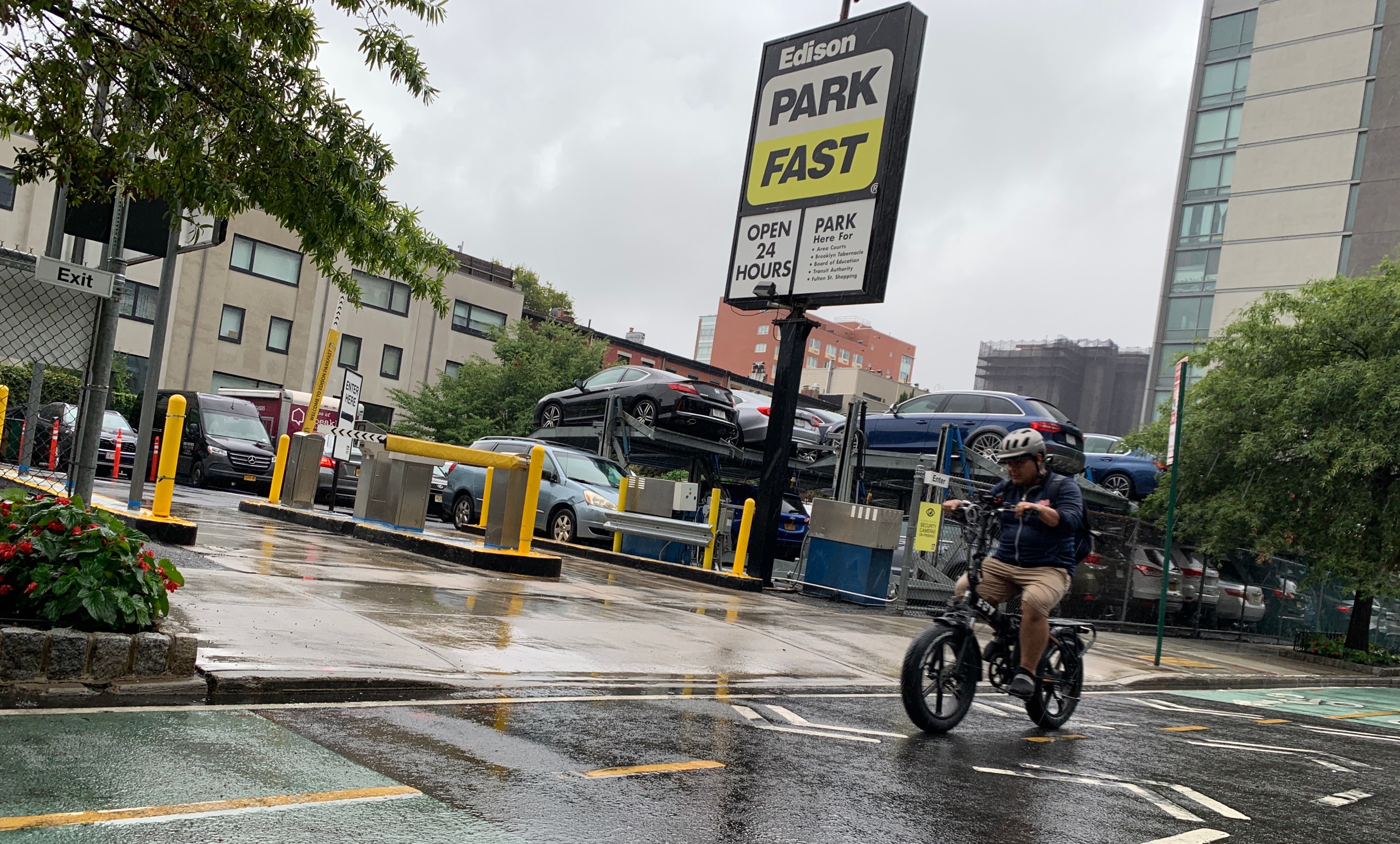Just what the community needs.
A developer’s plan to enlarge a parking lot in Downtown Brooklyn is irresponsible and misguided, pols and advocates charge — especially amid two competing crises currently devastating the city: housing and climate.
Developer Edison Properties wants to add 95 more parking spaces to the 150 that currently exist at its lot at the corner of Schermerhorn and Hoyt streets, saying it needs to accommodate nearby residents who are purchasing vehicles.
But the lot is at the Hoyt-Schermerhorn A, C, G subway station, and close to at least four other stations and the Fulton Street bus rapid transitway. It would be better suited as homes for people, rather than cars, officials say.
“It’s a site not only appropriate, but ideal for housing,” said Dan Garodnick, the chair of the City Planning Commission during a Wednesday hearing on the developer’s application for a permit to expand the parking lot.
The developers defended their plans, saying they conducted an analysis of census tracts including, and immediately surrounding, the lot — and found that the number of households with cars increased by about 50 percent between 2011 and 2021.
“Our business decisions are supported by an analysis of parking data we did,” said Anthony Borelli, the senior vice president of Edison Properties.
But taking a step back, and looking at the whole of the community district in general, the number of households without any vehicles increased nearly 3 percent, from 66.5 percent in 2010 to 68.2 percent in 2021. And the number of households within Community Board 2 with at least one vehicle increased by just 0.1 percent, from 28.1 percent to 28.2 percent, over the last decade, while the number of households with at least two or more vehicles actually decreased, according to the census data.
The 11 tracts just outside of the lot in question also show an increase in the number of households that do not have access to any vehicles, rising from 72.8 percent between 2006 and 2010 to 73.1 percent between 2017 and 2021, according to the data — in line with the city’s goals of reducing dependence on private cars.
“We have so many policies, so many different public infrastructure investments, to disincentivize the use of cars, particularly in areas that are across the street from one subway and then just a couple blocks from others,” Department of City Planning Commissioner Juan Camilo Osorio said during the hearing.
And in Brooklyn overall, the number of households that do not have a car is still more than half, according to the data.
Borelli said that 73 percent of his customers come from Brooklyn, and a whopping 63 percent come from within the same ZIP code as the parking lot, or the one that’s immediately adjacent to it.
But Osorio said that only proves that the lot caters more to the residents of the area — where the median household income is more than six figures — than the rest of the city.
“When you look at census data, you're looking at the trends about the people who live there. And, you know, in the business district, you want to prioritize the type of people that are coming here to shop or are coming here to work. And it sounds like your research is primarily focused on the needs of the people who live there, who need to basically park their car,” said Osorio.
Osorio added that as the city deals with increasingly extreme weather, like heat, smoke, and floods, it must focus its efforts on reducing the number of cars on the road and their effect on climate change.
“This is also happening at a point where the city is making a dramatic effort to decarbonize the city," he said.
Last October, the city unveiled its long-awaited redesign of Schermerhorn Street — a crucial link for cyclists heading to and from the Brooklyn and Manhattan bridges — which transformed the 50-foot-wide, two-way corridor between Smith Street and Third Avenue into a one-way eastbound roadway with a two-way bike lane. Adding more cars into the mix will only create more danger, officials warned.
“There’s a substantial bike lane that goes along the parcel. How will safety be addressed with that?” said DCP Commissioner Anthony Crowell.
Brooklyn Borough President Antonio Reynoso called the proposed development “inappropriate” and said due to the recent changes on Schermerhorn Street, forthcoming work on the nearby Brooklyn-Queens Expressway, and congestion pricing, he believes that the city should do more "to discourage private vehicles from transiting Downtown Brooklyn, which is characterized by significant high-density pedestrian traffic and excellent access to public transportation.”
Reynoso requested that the developers go back to the drawing board, but in order to build residential, the developers would again need special permission, according to the Department of City Planning.
And the local pol who represents the area also told Streetsblog that he has no plans of allowing the expansion.
“I have been a hard, unequivocal 'no' on the parking lot expansion,” said Council Member Lincoln Restler (D-Downtown Brooklyn). “I would like to see an active use other than parking that benefits our community.”






